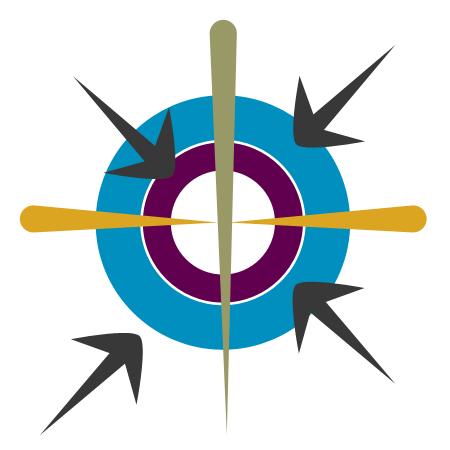MEDIA
New Delhi: Has the white paper on the Pakistani intelligence agency ISI's activities in India got prepared by the Bhartiya Janata Party-led coalition government leaked?
Deputy Prime Minister Lal Krishna Advani kept telling Parliament that the white paper was under preparation but he ultimately backed off burying the project after the wisdom bestowed upon him that it would compromise the Indian intelligence agencies' hard work in keeping tab on the ISI agents.
A Mumbai-based think tank headed by Sundeep Waslekar has come out with a book that indicates a strong probability of the secret white paper of the government getting leaked. The book gives details of the ISI activities in India carried out with the help of Madrassas (Islamic schools) without giving the source from whom the information was collected as it is sought to be presented as the result of the think tank's own study.
It tries to show Madrassas in a bad light, an attempt done so far by the BJP and its government at the Centre, indicating that it may have come from none else but the government itself.
The book claims that ?India identified enhanced ISI activities in nine states and an active network of ISI sponsored illegal madrassas throughout the country and that ISI has 60 centres in India employing as many as 10,000 spies.
In 2003, India identified enhanced ISI activities in nine states, namely Uttar Pradesh, Gujarat, Maharashtra, Bihar, Andhra Pradesh, West Bengal, Tamil Nadu, Kerala and Jharkhand, and an active network of ISI sponsored illegal madrassas through out the country, says the book.
Details of the alleged ISI's inroads in India are listed by the Strategic Foresight Group of the International Center for Peace Initiatives (http://www.strategicforesight.com) in the book entitled "Cost of Conflict between India and Pakistan."
The book, described as a study report, claims that Kerala has the highest number of nearly 10,000 Madrassas, followed by 6000 in Madhya Pradesh.
Five states, Maharashtra, West Bengal, Assam, Gujarat and Rajasthan have around 2,000 madrassas each, close to 1,000 each in Delhi, Karnataka, Andhra Pradesh and on Indo-Bangladesh border while the lowest number, 122, is in Jammu and Kashmir.
It said the ISI spends Rs 600 million each year on funding these madrassas in India, noting that India's fragile communal fabric is quickly becoming the primary target of Pakistan-sponsored terrorism, in addition to its Jihad-e-Kashmir operation, Lashkar-e-Taiba launched Jihad-e-Hind operation in early 2003 signifying the shift of LeT focus from Kashmir alone to the rest of India.
The book quotes Pakistani scholars as saying, if ISI manages to persuade even one per cent of the Muslim population (1.5 million) to take up arms, these 1.5 million is a large enough number to create internal turmoil in India.
With such an extensive network, it could become relatively easy for ISI to scheme Godhra-like incidents to foment large-scale communal violence in India.
The think tank has identified four Pakistanis in the book as associated with the study including former Foreign Secretary of Pakistan Niaz A. Naik, eminent writer and scholar Dr. S. Akbar Zaidi, Editor of newspaper 'Awam' Nazir Ahmed Leghari and a political analyst Zafarullah Khan.
The section on the ISI activities, reporting these statistics, also gives its analysis of how things could play out in future.
The following are excerpts on Page 78 of the book under the head "Interference in Internal Problems." "India?s fragile communal fabric is quickly becoming the primary target of Pakistan-sponsored terrorism.
In addition to its Jihad-e-Kashmir operation, Lashkar-e-Taiba launched Jihad-e-Hind operation in early 2003 signifying the shift of LeT focus from Kashmir alone to the rest of India.
"In 2003, India identified enhanced ISI activities in nine states, namely Uttar Pradesh, Gujarat, Maharashtra, Bihar,Andhra Pradesh, West Bengal, Tamil Nadu, Kerala and Jharkhand, and an active network of ISI sponsored illegal madrassas throughout the country. There are 150 million Muslims in India as per 2003 estimates."
According to Pakistani scholars, if ISI manages to persuade even one per cent of them (1.5 million) to take up arms, these 1.5 million is a large enough number to create internal turmoil in India.
With such an extensive network, it could become relatively easy for SI to scheme Godhra-like incidents to foment large-scale communal violence in India.
"On the other hand, India would find the task of containing the communal conflagration increasingly difficult. The high communal tensions in India would provide further incentives to the jihadi groups in Pakistan to fight for the cause of Indian Muslims. It can also result in the deterioration of India's relations with Bangladesh and other Muslim nations."





